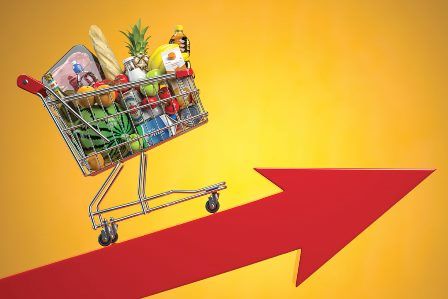
Food prices in South Africa could climb even higher – and you know who to blame
The impact of load shedding on South Africa’s food system is severe, says the Bureau for Food and Agriculture Policy (BFAP), and will likely be the key factor that prevents the country from following the global trend of decreasing food price inflation in 2023.
In the BFAP’s latest food inflation brief, the group noted that load shedding has been wreaking havoc on the local economy, particularly in the food and agricultural sector.
Results from several listed food producers have already revealed the severe strain these companies are under, while analysts and experts have been sounding alarm bells over the country’s food security as a result.
For most South Africans, however, the real impact of the crisis will be felt right in the pocket as monthly grocery bills climb higher and certain products become more scarce.
“Load shedding increases costs directly and indirectly through higher rates of wastage and spoilage within food chains,” the BFAP said.
“Financial results from several food companies indicate that fuel expenses to run generators during load shedding are skyrocketing. These costs cannot be absorbed in the chain and are, to a large extent, passed on to consumers.”
While global trends indicate food price deflation should start coming through after a rough two years, load shedding is putting many hurdles and pitfalls in the process for South Africa, where prices are now expected to stay higher for longer.
The FAO Food Price Index, based on the prices of an international basket of food commodities, was 1.0% lower in December 2022 compared to December 2021, declining for the ninth successive month, following a 1.9% decrease from November 2022.
Inflation data for December 2022 published by Stats SA earlier this month showed that food inflation in South Africa is slowing – the group recorded food inflation at 12.4% year-on-year, down from 13% in November – but this is still extremely high, and far outside the Reserve Bank’s target band of 3% to 6%.
The BFAP said that food inflation is sticking at higher rates due to several supply shocks in various agricultural commodity and livestock markets around the globe which have, in turn, also filtered through to the local market.
- In agricultural commodity markets, these crises ranged from hot and dry conditions in key production areas to geopolitical unrest and supply chain disruptions. The latest issue that is supporting global maize and oilseed prices, for example, is a severe drought in Argentina.
- High grain and oilseed prices have, in turn, also affected production costs in livestock markets. This, combined with disease issues, limited the supply of products such as poultry which provided upward movement in global and local poultry meat and egg prices.
- Locally, higher prices in global markets and a weak exchange rate during the last quarter of 2022 contributed to the inflationary effects apparent in food products.
“Although exchange rate movements have largely been driven by global monetary policy dynamics, the increase in load-shedding frequency and intensity has also contributed to a weaker rand,” the BFAP said.
Some support for lower food prices is seeping through thanks to a stable rand and slightly lower fuel costs – but petrol and diesel prices are expected to climb again in February, while the rand is expected to remain volatile for much of the year.
The BFAP said that food inflation for January 2023 could move below 12% year-on-year, however, the outlook for the rest of the year is shaky.
“Extending further into 2023, global market dynamics, as well as local supply and demand dynamics, will be an important factor influencing South African food prices,” it said.
The second Brazilian maize crop will be a key global determinant of staple food price trajectories over the first half of 2023.
Locally, the Crop Estimates Committee (CEC) will publish its first official area estimates. The relative strength of the rand and the extent of continued load shedding will also play a role, the BFAP said.
One piece of good news is that maize and soya futures markets are trading at export parity levels, reflecting the market sentiments that South Africa is still on track to produce surpluses of maize and soya beans under current cropping conditions.
However, the outlook for sunflowers and sunflower oil is not as good.
“The market is factoring in fewer hectares planted to sunflower, which implies that local availability could become a cause for concern in the following months. This will influence sunflower oil retail prices. ”
News Category
- International retailers
- On the move
- Awards and achievements
- Legislation
- Wine and liquor
- Africa
- Going green
- Supplier news
- Research tools
- Retailer trading results
- Supply chain
- Innovation and technology
- Economic factors
- Crime and security
- Store Openings
- Marketing and Promotions
- Social Responsibility
- Brand Press Office
Related Articles

Empowering South African households through gro...

SPAR shares practical tips to beat food inflation

South African motorists could be paying up to R...

Big VAT changes on the cards


